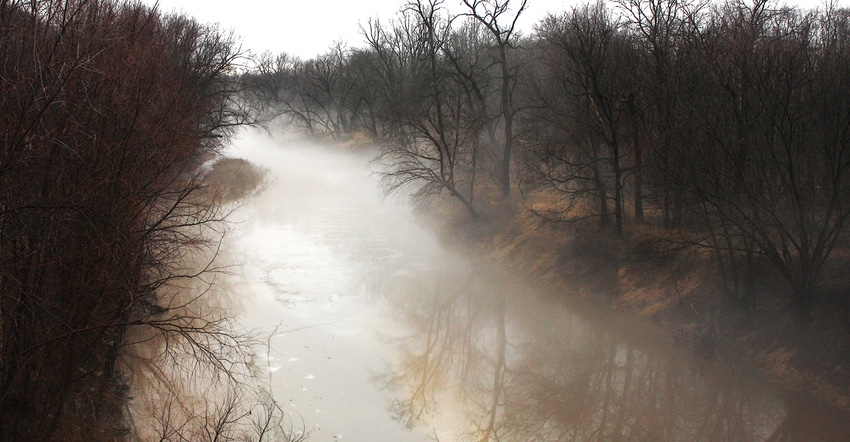October 7, 2019

By Hilary Pierce
Collaboration is proving to be vital to the success of the English River Watershed Management Authority in achieving its goals of reducing flood risk and improving water quality.
The English River Watershed is one of nine watersheds participating in the Iowa Watershed Approach project, a statewide $96.9 million flood reduction and water quality improvement project funded by the Department of Housing and Urban Development that began in 2016. The IWA is a way for cities, counties, soil and water conservation districts, and stakeholders to cooperatively engage in watershed planning and development.
As part of the IWA project, ERWMA received $4.3 million to cover 90% of practice construction costs, as well as technical assistance, engineering and archaeology expenses. Jody Bailey, ERWMA project coordinator, says the original target number of practices was 120. Currently, the watershed has nearly 500 structures in the design or construction phase, and that number represents projects for only about half of the total number of individuals who signed up for assistance. Although there is likely not enough funding through the IWA project for all the practices the residents of the watershed are interested in installing, Bailey hopes the momentum of this project can help the watershed group leverage additional funding in the future.
IWA is a “flood first” program, and the practices ERWMA is most interested in partnering on are those that can reduce the volume and speed at which water runs over the landscape and enters streams and ditches.
“One property at a time, there are cumulative benefits for the watershed,” Bailey says.
The majority of the projects are water and sediment control basins, which can help store more water on the landscape. Other projects include ponds, stormwater detention basins, grassed waterways, wetlands and buffers. In addition to helping reduce downstream flood risk, these practices can also have soil health and water quality benefits.
Neighbors working together
Bailey is happy with the volume of interest in the project from watershed landowners and tenants, but even more exciting is the fact that a large percentage of the practices are joint projects between adjacent landowners. “They certainly get more ‘bang for the buck’ when they work together across fence lines to better manage soil loss and stormwater,” Bailey says.
Partners in the IWA project include the Iowa Economic Development Authority; Homeland Security and Emergency Management; University of Iowa; Iowa State University; University of Northern Iowa; Iowa Department of Natural Resources; Iowa Department of Agriculture and Land Stewardship; the cities of Coralville, Dubuque and Storm Lake; and Benton, Buena Vista, Fremont, Iowa, Johnson, Mills, Winneshiek and Howard counties.
For more information about the North English River Watershed project or upcoming events, contact Jody Bailey at [email protected] or visit englishriverwma.org. To learn more about the IWA project, visit iowawatershedapproach.org.
Pierce is an ISU Extension Outreach specialist.
You May Also Like




